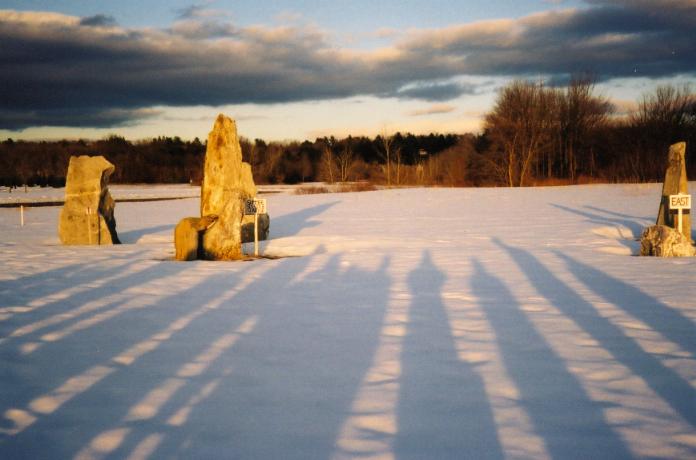Mark the Winter Solstice on December 21 at the UMass Sunwheel

The Umass Amherst sun wheel. Photo: umass.edu
Source: Umass News and Media
The public is invited to observe sunrise and sunset on the day of the winter solstice among the standing stones of the UMass Amherst Sunwheel on Thursday, December 21, at 7 a.m. and 3:30 p.m. UMass Amherst astronomy Ph.D. candidate Bingqing Sun will discuss the astronomical cause of the solstice. The gathering swill be cancelled in the case of heavy rain or snow.
Astronomers mark the start of winter as the moment the sun reaches its southernmost apparent position relative to the stars, which this year occurs at 10:27 p.m. EST on December 21. After that moment, the sun begins moving northward, and the days start getting longer. On the date of the winter solstice daylight hours are shortest in the Northern Hemisphere—just nine hours and four-and-a-half minutes in Amherst.
On this date, the sun rises and sets at its most southerly spots along the horizon, positions marked by the Sunwheel’s southeasterly and southwesterly standing stones. Visitors who stop in on their own will be able to see the sun rising and setting over the winter solstice stones from roughly December 16–26, because, for the week surrounding the solstice (which means stationary sun), the sun appears to rise at a fixed spot on the southeast horizon and to set in a fixed southwest direction.
At this solstice’s gatherings, UMass Amherst astronomy graduate student Bingqinq Sun will discuss the astronomical cause of the solstice. She will explain the seasonal positions of the Earth, sun and moon, and the design of the Sunwheel and other calendar sites around the world. She will also answer other astronomical questions.
The UMass Amherst Sunwheel is located south of McGuirk Alumni Stadium, just off Rocky Hill Road (Amity Street) about one-quarter mile south of University Drive. Visitors to the Sunwheel should be prepared for freezing temperatures and wet footing. Donations are welcome to help with the cost of additional site work and future events.
